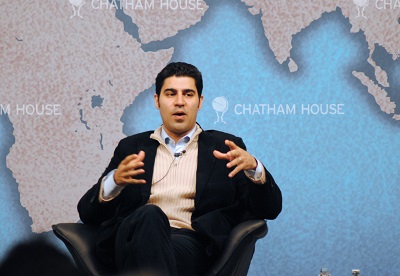Fittingly, for an author who argues that connectivity is the key driver of growth in the modern age, Parag Khanna seems to have ties all over the world, and roots in many of the largest urban centres. Born in India, Khanna grew up in the United Arab Emirates, New York and Germany. Today he lives in Singapore, along the so-called “New Maritime Silk Road” that connects many of the world’s new power centres and will, according to one estimate, connect an area representing 63% of the world’s population.
Khanna’s work has been equally similarly expansive, examining how geography and connectivity affect global affairs in several books. In 2008 he was included on Esquire’s list of the “75 most important people of the 21st century.”
We spoke to him about his theory of a new, more connected world, the importance of knowledge exchanges between cities and how the challenges of inequality and environmental degradation in a rapidly urbanising world.

What is a connected city, and why is connectivity the driving force of development and organisation?
I think connectivity is fundamentally a physical thing, it’s about infrastructure: roads and bridges and energy and internet and all of those things. So a connected city should almost be thought of in the literal sense of the term, the quality of the internal connectivity of people, appropriate to the population, economic profile etc. (…)
Inter-city connectivity is an area that I’m working on a lot. I’ve realised that when we talk about the GDP size of the city, we actually can’t disaggregate that very well into the things that are done in that city, the goods and services that are consumed in that city versus the proportion of the total economic value that is dependent on connectivity - and it’s a lot. And if we were better able to quantify those things I think we would appreciate the value of connectivity a lot more.
Most people are familiar with what we call external connectivity, how international cities benefit from their connection to the rest of the world. How should we understand internal connectivity?
[Internally connected cities] are the places where you have the greatest mobility of people, perhaps with the least, let’s say, traffic congestion. Or the ability of people to be digitally connected and to work in the services economy as we transition into a more and more post-industrial world.
And how would you measure the results of the internal connectivity? You would maybe look at results of things like income mobility over time. Or you would want to look a the percentage of self employed people and how much they earn, vis a vis what would be a rising unemployment rate in light of de-industrialisation, for example.
So how many people survive in the sharing economy? Accessibility to public transportation correlates to higher incomes more than higher education levels correlates to higher incomes, for example. That’s connectivity at work. There are many ways to measure it at different time scales.
I’m out to prove the obvious, but we don’t appreciate the obvious, which is that more connectivity is better.
Many of the mega-metropolises you cite as examples - Mumbai-Pune, the Pearl River Delta, Greater Delhi etc. - of connected cities have severe inequality and suffer from serious environmental problems. What can cities do to tackle these problems?
People see the mega cities light up on my map as concentrations of demographics, but that doesn’t necessarily mean they are good places to be. Mega cities obviously where you see the strongest manifestation of income inequality. And urbanisation, which many people obviously celebrate.
We celebrate urbanisation but we revile inequality. We don’t realise that urbanisation is one of the causes of inequality. People who move to cities have access to services, to jobs, to education and incomes therefore that are much higher than people in rural areas. So inequality is destined to rise as people move to urban areas. It has something to do with financial globalisation, but not in every country.
Not every country is like Britain, with the city of London and a concentration of wealth, or like the United States New York. We can’t extrapolate or impose that analysis on developing countries where all the mega cities actually are, so let’s treat the developing megacities in and of themselves and for themselves and figure out what their problems are.
Are cities making progress, and how much of this is thanks to learning from one another through various knowledge exchange programs?
Yes, that’s why I came up with this term diplomacity [international city-to-city diplomacy]. The learning networks are very important and there are hundreds of them. The C40 is one of them. That’s the one everyone knows, but there are many many many.
And it really comes down to not having a formal organisation but just the transfer of technology and best practices which is done by NGOs you’ve never heard of and small companies you’ve never heard of. And so forth. I think that’s incredibly important. I think it’s more important than every climate summit that’s ever been held in the world.
I would take every cent of that money and put it into clean tech transfer programs.
youris.com provides its content to all media free of charge. We would appreciate if you could acknowledge youris.com as the source of the content.